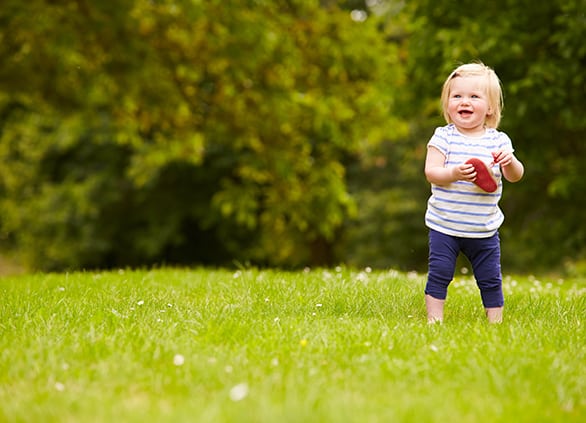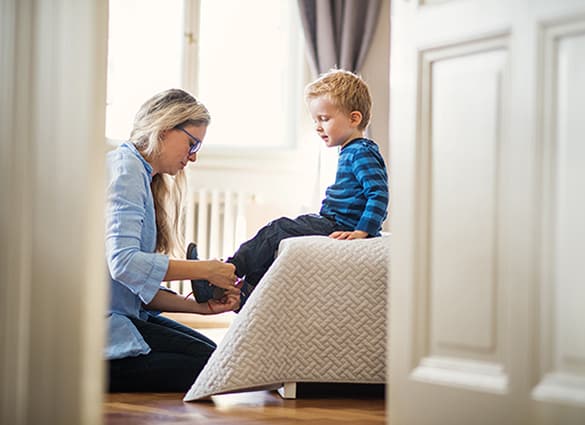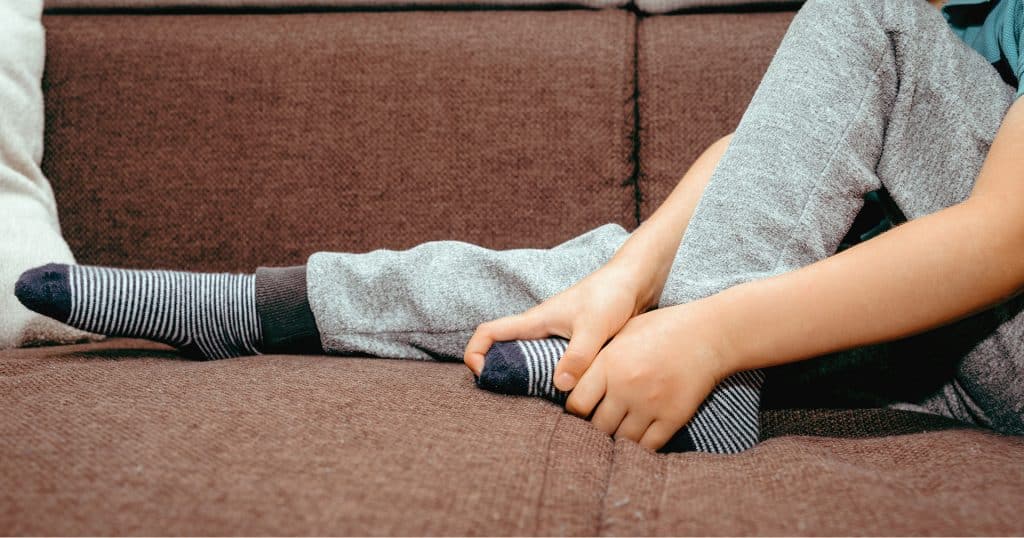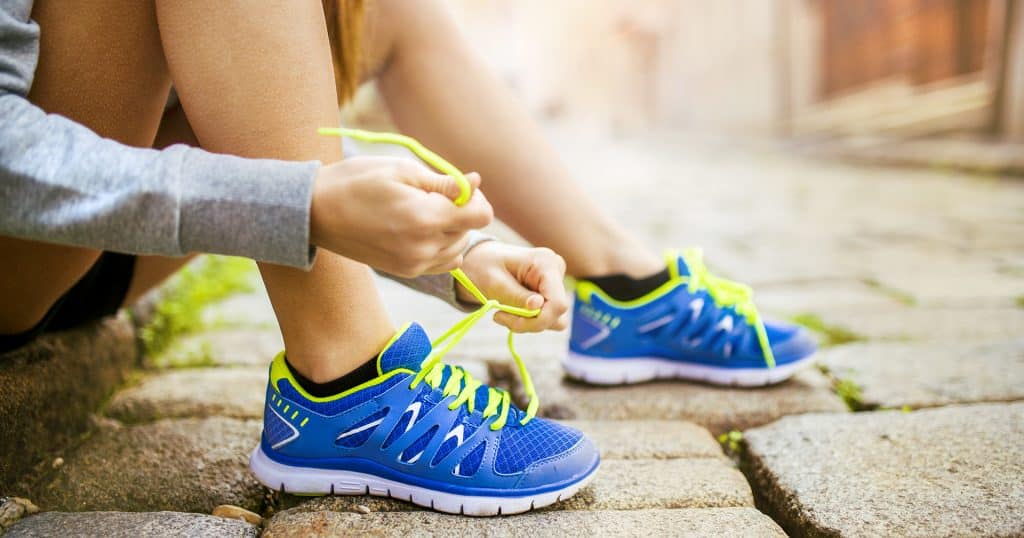Developing feet
Most children learn to walk at about the time of their first birthday, although some may learn either months earlier or later. Young children’s feet are very different to adult’s feet. During the first year of your child’s life, their feet are still developing with relatively soft cartilage and foot bones which are still forming. This means that their feet are very vulnerable to any abnormal forces (like poor footwear) that can cause the foot and toes to deform.
When a toddler is learning to walk they receive important sensory information from the soles of their feet. Children’s feet develop best when they are barefoot. It is important to allow your child to go barefoot whenever possible, this will help them develop balance, coordination and strength. By giving the toes freedom to move and ‘grasp’, the feet naturally develop strength and coordination. Shoes particularly with hard or stiff soles can make walking more difficult, causing more tripping.
However, it isn’t always practical to go barefoot. In cold weather or when walking on prickly grass, or dirty, rough or hot ground , your baby’s soft feet will need some protection. This is when proper footwear becomes very important.
young girl having fun playing game outdoors
a young mother putting shoes on toddler son
Shoe features
When you are choosing shoes for toddlers and beginner walkers the shoes should have the following features:
- Lightweight: the shoes should be not be too heavy or obstruct the child’s walking or movement in any way
- Flexible/soft: the shoes should not be restricting important toe and foot movement and should not constrict the growing feet in any way
- Breathable: the shoes should be made of breathable natural materials, such as leather, or breathable mesh
- Flat: infants’ and toddlers’ shoes do not require any extra arch support. All toddlers have flat feet at first, and do not develop an arch until closer to 3 years of age. Shoes for infants and toddlers should simulate barefoot conditions, so the young child’s feet are able to strengthen naturally
- Low heel: the heel of the shoe should be flat – never choose a shoe with an elevated heel.
- Socks: ensure your child’s socks are not too short or too tight, as this may also restrict toe movement causing deformities.
Children’s feet grow rapidly during development so their shoe size may need updating every few months. Shoes that are not fitted correctly and are too tight can affect your child’s walk and cause problems. Remember that shoe style and fit are both important in the health of your child’s feet.





